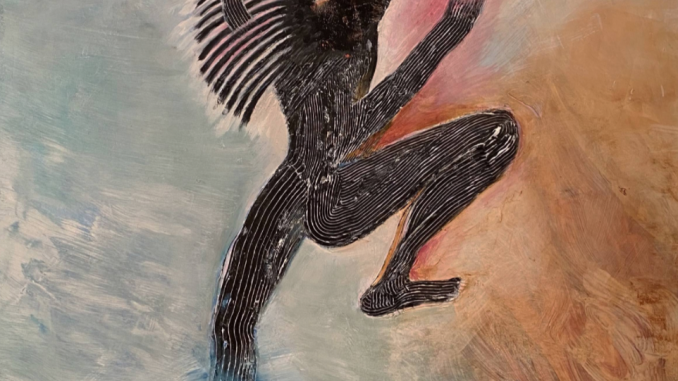
Mary Frank is a multimedia artist that came into the public eye in the 70s when she started making abstract sculptures of the female body. Her work became popular because of its themes of feminism and environmental preservation.
Walking into “The Observing Heart” at the Dorsky Museum you can see her iconic sculptures, paintings, “shadow papers” and posters.
Frank’s story is important in order to have a deeper understanding of her art. She was born in England in 1933 but moved to Brooklyn, NY in 1940 during WWII. She came from a non-practicing Jewish family that recognized the danger they were in. She studied in Manhattan with the godmother of modern dance herself, Martha Graham, which heavily affected her style of painting. All of the figures in her art seem to be in the midst of motion.
After she married photographer Robert Frank, she transitioned from dance into tangible art. Her earliest artwork was sculpture. She practiced wood carving in the 1950s with local woodworker, Alfred Van Loen. She eventually became more interested in clay because of its fluidity and adaptiveness. Frank continued working with clay for decades although her focus changed periodically.
In the late sixties she accidentally discovered her love for monotypes. While teaching at The New School, she dropped a glass painting she was working on but luckily was able to keep the artwork by pressing a piece of paper onto the painting, transferring the work. Monotypes are essentially printmaking except they are improvisational, and artists can add on to them as they please.
As Frank continued to sculpt in the 1970s, she also created shadow papers. They isolated light from a window in between cut slits through a piece of paper to make a glowing image. One of her shadow papers, “Raven,” pictures a raven bending toward the ground with its beak and claws exposed.
From 1974 to 1975 both Frank’s mother and daughter passed away and her son became terribly ill. Her grief greatly inspired her work. The art became more emotional and personal. For example, her piece, “Woman With Winged Arms,” is a giant ceramic woman laying on her back with an exhausted, hopeless expression on her face.
In the 1990s her focus turned to paintings because she wanted to make monotype-like art on a larger scale. Her paintings reflect spirituality and myths. Some of her paintings seem to tell a story with different depictions left to right. One of her paintings, “Presence/Absence,” depicts a human figure’s relationships with others while going through different motions.
Looking at her art, you can tell Frank is passionate about the environment because of the way she incorporates the natural world in her art. She often connects animal and human bodies such as the painting “Tempest” which features a fish with human legs. The archival pigment prints that are displayed are collages that incorporate things found in nature like wood leaves and flowers, with photos, glass and paper construction.
Frank’s art also plays with opposition and contrast. Her painting “Lost and Found” features a larger humanoid figure reaching toward a monkey. Another painting she did on a triptych called “Where and When?” has a primarily white vast landscape but opens up to a red and angry looking figure.
More recently in her career, she began making posters in response to politics and current events. They depict phrases such as “Don’t Tear Families Apart” and “No War.”
One of the great things about Frank’s art is the many different interpretations a viewer could have. It’s true that many of her pieces dive into femininity, politics and her personal life, yet her work is so fluid and undefined.
“The Observing Heart” will be displayed at the Dorsky up until July 17.
